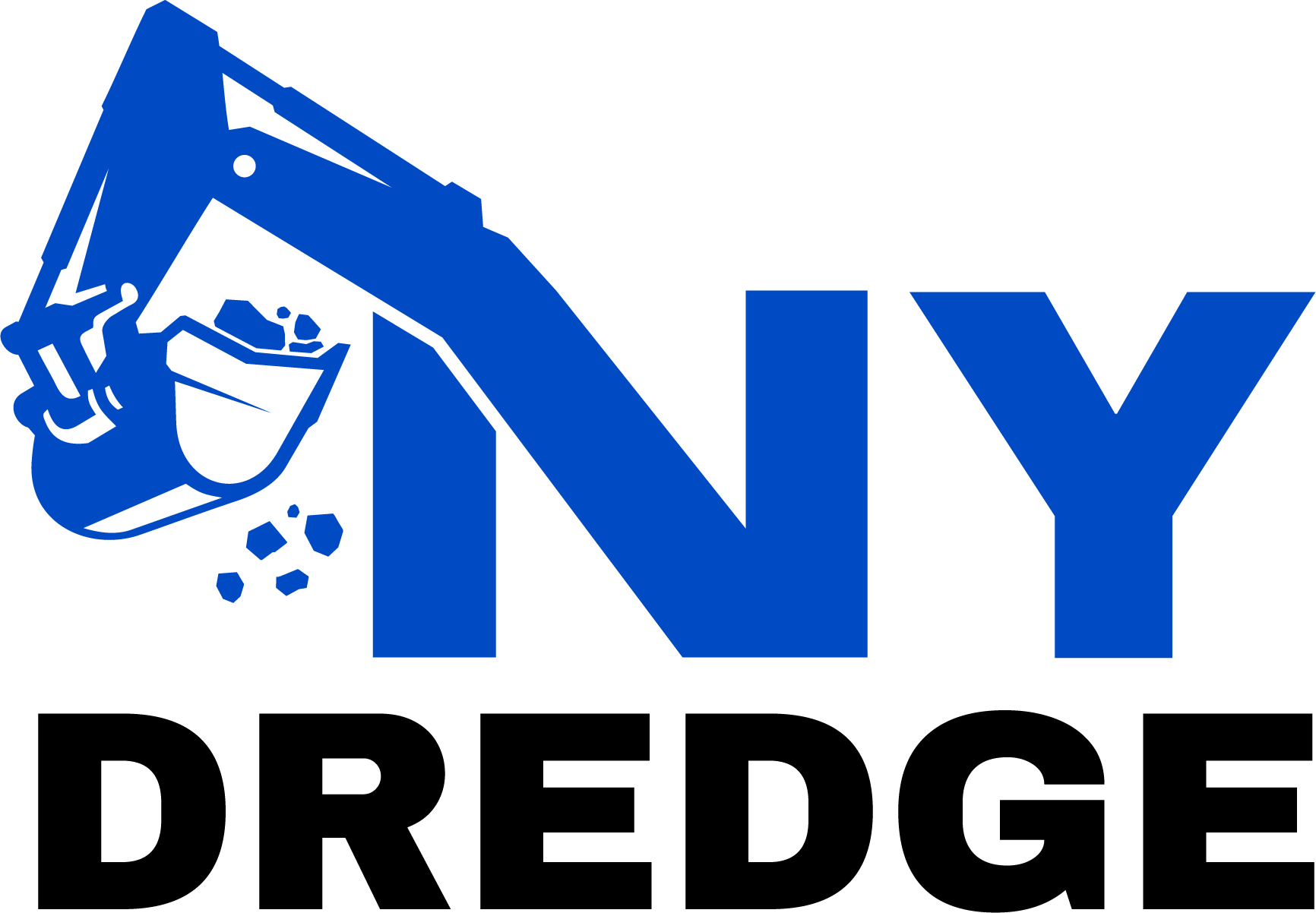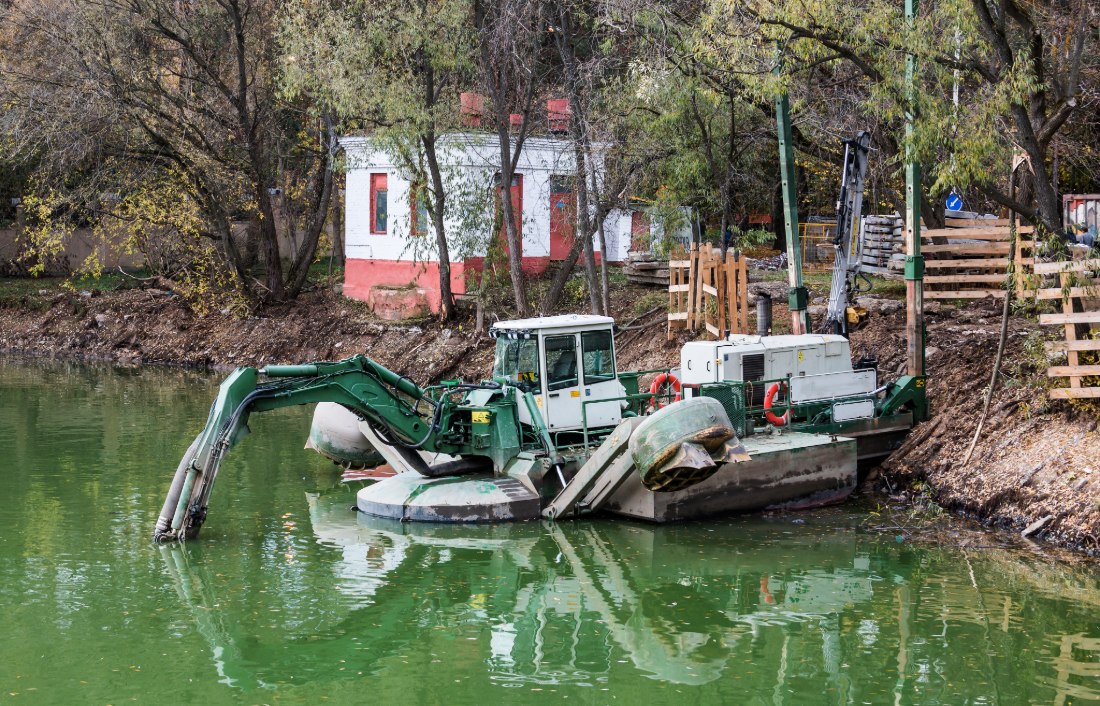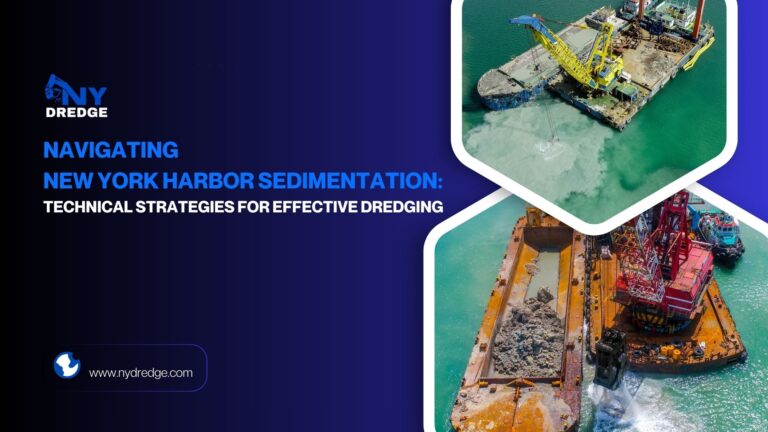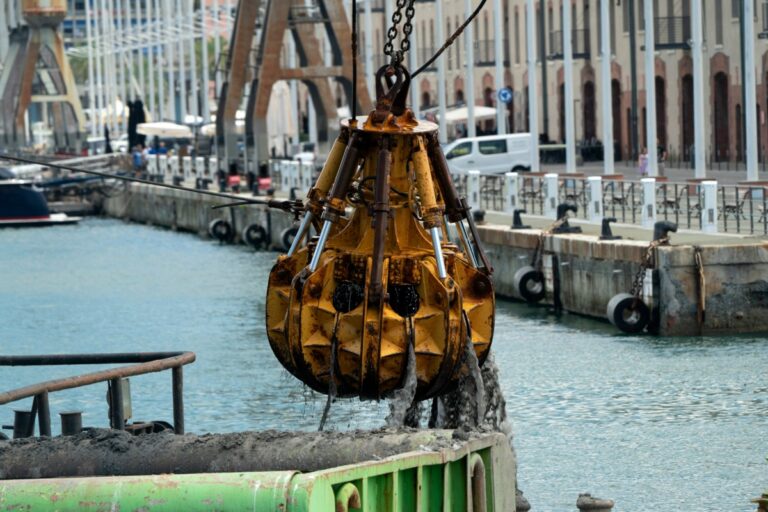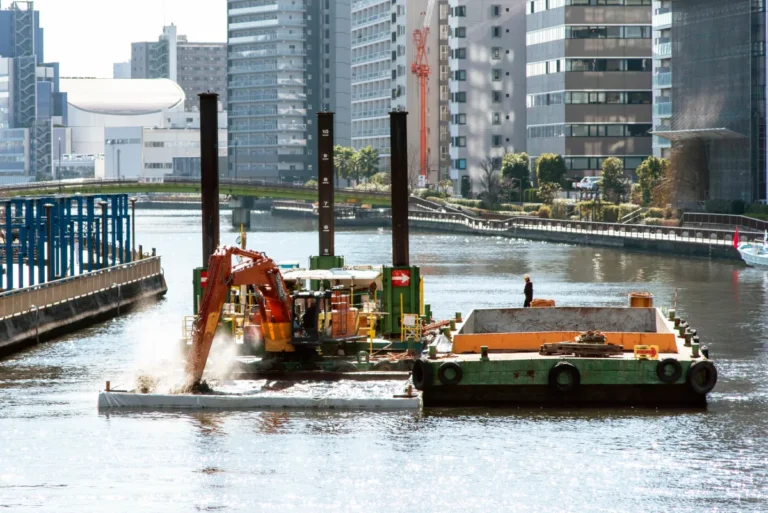Ponds play a vital role in water storage, recreation, and ecosystem support, but over time, sediment buildup can reduce depth, degrade water quality, and disrupt aquatic life. The right pond dredging equipment—from compact small pond dredging equipment to high-capacity hydraulic dredging equipment—offers an effective solution for restoring pond depth, improving clarity, and maintaining long-term functionality. Understanding the dredging process, equipment options, and environmental best practices is key to achieving lasting restoration results.
Understanding Pond Sedimentation
Sedimentation is a natural process in ponds, but without proper management, it can significantly impact depth and water quality. Over time, soil particles, organic matter, and nutrients accumulate at the bottom, leading to reduced capacity and declining water conditions.
Causes of Sediment Buildup
- Soil Erosion: Runoff from surrounding land carries fine particles into the pond, especially after heavy rains or from poorly vegetated banks.
- Decaying Vegetation: Fallen leaves, algae, and aquatic plants break down, creating organic sludge that adds to sediment levels.
- Nutrient Runoff: Fertilizers and other nutrient-rich runoff encourage excessive plant growth, which, when decomposed, further increases sedimentation.
Impact on Depth and Water Quality
- Reduced Storage Capacity: Sediment accumulation decreases the pond’s depth, limiting its ability to hold water for irrigation, recreation, or habitat purposes.
- Increased Turbidity: Suspended particles cloud the water, affecting aquatic life and reducing light penetration needed for healthy ecosystems.
- Algae Growth and Oxygen Depletion: Excess nutrients in sediment promote algae blooms, which deplete oxygen levels during decay, stressing or killing fish and other aquatic organisms.
What is Pond Dredging and Why It’s Necessary
Definition of Pond Dredging
Pond dredging is the process of removing accumulated sediment, organic debris, and other materials from the bottom of a pond to restore its original depth and improve water quality. This is typically achieved using specialized pond dredging equipment designed to efficiently extract and transport sediment without draining the entire water body.
Differences Between Manual Cleaning and Mechanized Dredging
- Manual Cleaning: Involves basic tools like shovels, nets, or small pumps. While cost-effective for minor debris removal in very small ponds, it is labor-intensive, time-consuming, and limited in depth and sediment volume that can be addressed.
- Mechanized Dredging: Utilizes advanced systems such as hydraulic dredging equipment or small pond dredging equipment, capable of removing large volumes of sediment quickly and with minimal disruption to the pond’s ecosystem. These machines can reach deeper areas and handle dense sludge more efficiently than manual methods.
Why Regular Dredging Extends Pond Lifespan and Maintains Water Health
Over time, sediment buildup reduces depth, increases nutrient concentration, and promotes algae blooms, leading to declining water quality. Regular dredging prevents excessive sedimentation, maintains optimal water volume, and ensures a balanced aquatic environment by using the right dredging approach—whether compact equipment for smaller areas or high-capacity hydraulic systems for larger ponds—owners can preserve both the functionality and ecological balance of their water bodies for years to come.
Overview of Pond Dredging Equipment

Common Dredging Technologies for Ponds
Pond dredging relies on specialized machinery designed to remove accumulated sediment efficiently. The most common methods include hydraulic dredging equipment, which uses powerful pumps to transport sediment as a slurry through pipelines, and mechanical dredging, which employs excavators, clamshell buckets, or amphibious machines to scoop out material physically. For smaller water bodies, small pond dredging equipment such as portable suction dredges or mini-hydraulic systems offers effective solutions with minimal site disruption.
Key Components of Dredging Systems
- Cutterheads: Mechanical or hydraulic rotating heads that loosen compacted sediment and direct it into the pump intake.
- Pumps: High-capacity slurry pumps that move sediment-water mixtures from the pond to designated disposal areas.
- Discharge Pipelines: Flexible or rigid pipelines that transport dredged material to containment sites or dewatering facilities.
- Control Systems: Operator consoles or remote-control setups that allow precise positioning, pump speed adjustments, and cutterhead operation for maximum efficiency.
Importance of Choosing the Right Size and Type
Selecting the correct pond dredging equipment depends on factors such as pond size, depth, sediment type, and accessibility. Oversized machines may cause unnecessary disturbance, while undersized units can extend project timelines and reduce efficiency. Hydraulic systems are often preferred for larger projects or when continuous sediment removal is needed, while small-scale units are ideal for targeted maintenance in residential or ornamental ponds. The right choice ensures cost-effective operations and optimal restoration results.
Small Pond Dredging Equipment
Features and Advantages for Small-Scale Projects
Small pond dredging equipment is designed specifically for compact water bodies where large, industrial dredging systems may be impractical. These units are lightweight, easy to transport, and capable of operating in limited-access areas. They are ideal for routine maintenance, targeted sediment removal, and restoring depth in ornamental, residential, or agricultural ponds without the need for large-scale mobilization.
Portable and Easier to Maneuver
Unlike heavy-duty dredges that require significant setup, small pond units can be deployed quickly and operated with minimal crew. Their compact size allows for precise maneuvering, making it easier to target specific areas with heavy sediment buildup while avoiding unnecessary disturbance to the rest of the pond.
Minimal Disruption to Surroundings
Because they operate on a smaller scale, these machines reduce shoreline damage, limit aquatic habitat disruption, and keep noise levels lower compared to full-sized dredges. This makes them suitable for use in landscaped areas, residential communities, and environmentally sensitive sites.
Examples of Typical Small Pond Dredging Equipment Types
- Portable Suction Dredges: Compact, pump-based systems that remove sediment as a slurry and transport it through hoses to a disposal area.
- Small Hydraulic Dredges: Scaled-down versions of larger hydraulic dredging equipment, offering efficient sediment removal in shallow or confined spaces.
- Amphibious Mini-Excavators with Pump Attachments: Versatile machines capable of working both on land and in water, equipped with dredge pumps for targeted sediment removal.
Hydraulic Dredging Equipment for Ponds
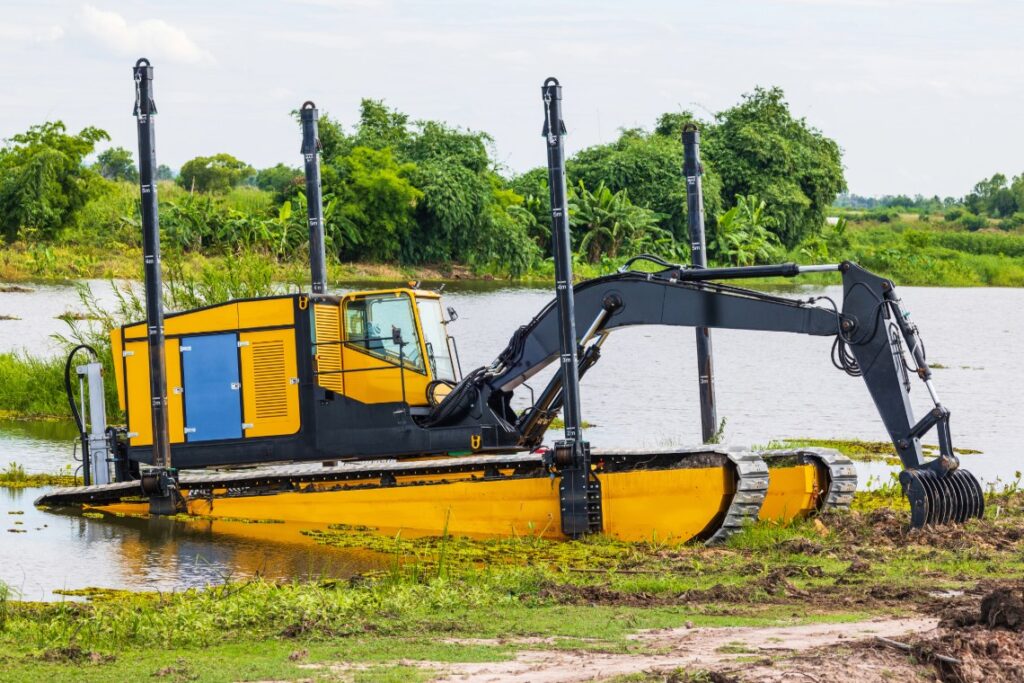
How Hydraulic Dredging Works
Hydraulic dredging uses high-powered slurry pumps to remove accumulated sediment from the bottom of a pond and transport it as a water-sediment mixture through pipelines to a designated disposal or dewatering site. This method eliminates the need to drain the pond, allowing dredging operations to occur while water remains in place. The process often incorporates cutterheads or agitators to loosen compacted material before it enters the pump intake, ensuring a consistent and efficient sediment flow.
Advantages Over Mechanical Excavation
- Continuous Removal Without Dewatering: Hydraulic dredging equipment allows uninterrupted sediment removal, minimizing downtime and avoiding the costly and disruptive process of draining the pond.
- Reduced Sediment Resuspension: By directly pumping the slurry away from the pond floor, hydraulic systems limit the amount of sediment stirred into the water column, helping maintain better water clarity during operations.
When Hydraulic Dredging Equipment is Ideal for Pond Restoration
Hydraulic dredging is best suited for projects where large volumes of sediment need to be removed efficiently, particularly in ponds with soft or fine-grained materials. It is also the preferred option when access is limited, water quality must be preserved during operations, or when sediment needs to be transported over long distances for processing. For smaller-scale applications, compact small pond dredging equipment with hydraulic capabilities can provide the same benefits in a size-appropriate format, delivering effective depth restoration and improved water quality.
The Dredging Process: Step-by-Step
1) Assessment & Planning
- Bathymetric surveys: Map existing depths to quantify infill and define target grades.
- Sediment sampling: Determine grain size, organics, and contaminants to select the right pond dredging equipment and disposal method.
- Access & logistics: Plan launch points, pipeline routes, staging areas, and traffic flow for safe mobilization.
- Permits & environmental controls: Establish turbidity limits, wildlife windows, and containment measures (e.g., silt/turbidity curtains).
- Method selection: Choose between hydraulic dredging equipment for continuous slurry removal or small pond dredging equipment for tight, shallow, or landscaped sites.
2) Mobilization of Equipment
- Site preparation: Stabilize banks/ramps, install containment, and mark utilities.
- Dredge setup: Assemble dredge, floats, suction/discharge hoses or pipelines, and anchors/positioning winches.
- Power & controls: Connect electric/hydraulic power units, commission pumps, and verify control systems and telemetry.
- Safety checks: Conduct toolbox talks, emergency response planning, and baseline water-quality readings (DO, pH, turbidity).
3) Sediment Removal
- Cutterhead or suction operation: Agitate and entrain material at controlled solids concentration to prevent overloading pumps.
- Cut plan execution: Follow predefined passes and elevations to achieve target depths with minimal rework.
- Real-time monitoring: Track flow, density, and vacuum/pressure to optimize production and reduce resuspension.
- Adaptive adjustments: Modify cutter speed, swing rate, or pump RPM as sediment conditions change.
4) Sediment Transport & Disposal
- Pipeline conveyance: Pump slurry through floating and shore pipelines to a designated dewatering or placement area.
- Dewatering options: Use geotextile tubes, settling ponds, or mechanical dewatering (screens, presses) based on sediment type and space.
- Water return management: Clarify effluent (polymer dosing if permitted) and return it to the pond within turbidity limits.
- Material handling: Stabilize, stockpile, or haul dewatered solids per regulatory and reuse/disposal requirements.
5) Post-Dredging Water Quality Checks
- Verification surveys: Conduct post-dredge bathymetry to confirm target depths and quantify volumes removed.
- Water quality sampling: Measure turbidity, nutrients, and dissolved oxygen to validate improvement goals.
- Punch-list corrections: Address any high spots or residual pockets with targeted passes using the selected pond dredging equipment.
- Demobilization & site restoration: Remove pipelines and temporary controls, restore access paths, and stabilize disturbed areas.
Environmental Considerations
Minimizing Turbidity and Protecting Aquatic Habitats
During pond restoration, controlling turbidity is essential to prevent harm to fish, plants, and other aquatic life. Operators using pond dredging equipment should employ silt curtains, adjust cutterhead speeds, and maintain optimal pump flow to reduce sediment disturbance. Seasonal timing may also be important—conducting work outside of breeding or spawning periods helps protect sensitive species. For smaller projects, small pond dredging equipment offers precise, low-impact operation, further minimizing habitat disruption.
Sediment Testing for Contaminants Before Disposal
Before sediment is removed and transported, samples should be tested for potential contaminants such as heavy metals, hydrocarbons, or excess nutrients. These results determine safe handling and disposal methods. When using hydraulic dredging equipment, knowing the sediment composition also helps in selecting proper dewatering solutions, ensuring that any return water meets environmental quality standards.
Compliance with Local Dredging Permits and Environmental Laws
Pond dredging projects must follow all relevant environmental regulations, including obtaining permits that specify work windows, turbidity thresholds, disposal site approvals, and monitoring requirements. Adhering to these rules not only avoids legal penalties but also ensures that dredging activities maintain ecological balance. Choosing the right dredging method—whether large-scale hydraulic systems or compact small pond units—should align with both operational needs and regulatory obligations.
Benefits of Using Pond Dredging Equipment
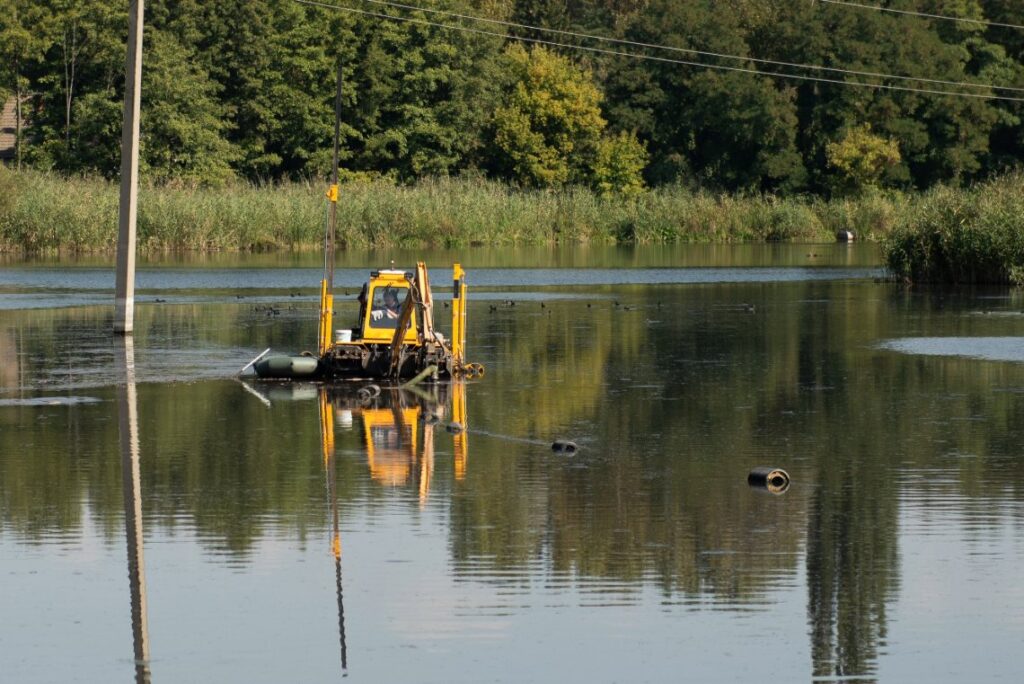
Restored Depth for Improved Water Storage and Recreation
Using pond dredging equipment removes accumulated sediment, restoring the pond’s original depth and volume. This increased capacity supports better water storage for irrigation, stormwater management, and recreational uses such as boating or fishing. For smaller properties, small pond dredging equipment offers a practical way to achieve the same results without the need for large-scale machinery.
Better Water Clarity and Oxygen Levels
By removing fine silt and organic sludge, dredging reduces turbidity and improves light penetration. This supports healthy aquatic plant growth and enhances dissolved oxygen levels, creating a more stable and balanced environment for fish and other aquatic organisms. Hydraulic systems are particularly effective at removing suspended materials while minimizing disturbance.
Reduced Algae Blooms and Odor Problems
Sediment often contains excess nutrients like nitrogen and phosphorus that fuel algae growth. Over time, this leads to harmful blooms and unpleasant odors. Removing nutrient-rich material with hydraulic dredging equipment or smaller-scale units helps limit algae development, improving both water quality and aesthetics.
Extended Lifespan of the Pond Ecosystem
Routine dredging prevents excessive sediment buildup, preserving pond depth and habitat diversity. This ongoing maintenance extends the functional lifespan of the pond, reduces the need for costly restoration projects in the future, and helps maintain a thriving ecosystem for decades.
Maintenance Tips for Long-Term Pond Health
Erosion Control Around Banks
Preventing excessive soil erosion is one of the most effective ways to reduce sedimentation. Stabilize pond banks with native vegetation, rock armoring, or erosion control fabrics to keep soil in place. Proper drainage management around the pond can also minimize runoff carrying sediment and nutrients into the water. This reduces the frequency and scale of dredging needed, whether using small pond dredging equipment or larger hydraulic dredging equipment.
Periodic Sediment Monitoring
Regularly checking sediment levels helps identify buildup before it becomes a major problem. Bathymetric surveys or simple depth checks can reveal early signs of silt accumulation. Addressing sediment deposits promptly with the right pond dredging equipment—from portable suction dredges for small areas to hydraulic systems for larger ponds—can save both time and costs.
Vegetation Management to Limit Organic Debris Buildup
Excessive aquatic vegetation, fallen leaves, and shoreline plant debris can accelerate sedimentation when they decay. Implement a vegetation control plan that includes removing invasive plants, trimming overhanging branches, and managing aquatic weeds. By limiting organic input, you can slow sludge buildup and maintain clearer water for longer periods.
Conclusion
Effective pond maintenance starts with removing accumulated sediment and restoring the balance of the aquatic environment. By selecting the right pond dredging equipment for your specific needs, you can improve water quality, extend the pond’s lifespan, and enhance its usability for years to come. At NY Dredge, we provide expert guidance and proven dredging solutions to help you achieve your pond restoration goals efficiently and responsibly.
